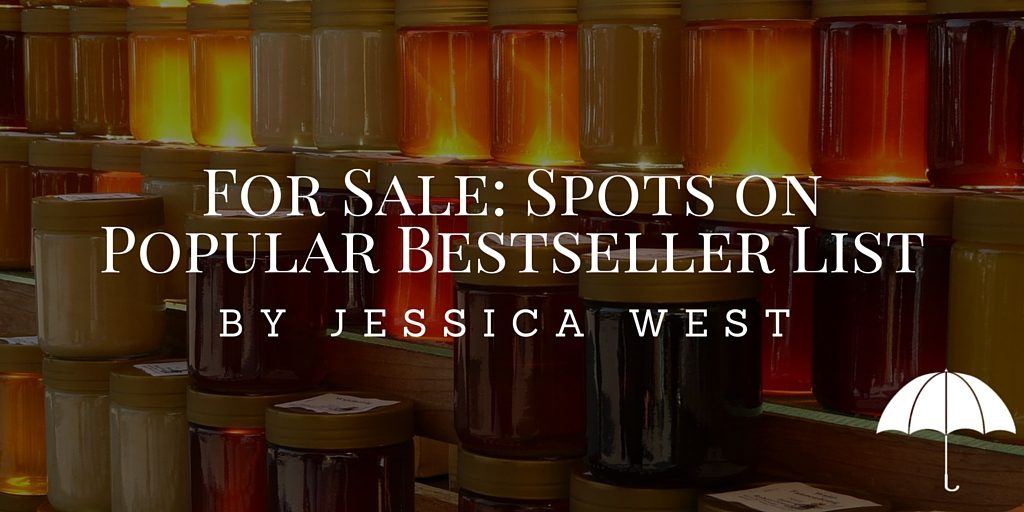
50 Shades of Bestseller
What constitutes a bestseller? How many books do you have to sell to be considered a bestselling author? When should an author add that to their bio? How does an author make the New York Time‘s bestseller list?
The answer must be massive sales. I mean, it’s a no-brainer. Right? Well, hold up there a second. It may be just a little more complicated than that. In fact, the whole thing’s become a shady business.
Now, I don’t think the New York Times has a submission guidelines page where authors can apply for placement within that list. If they do, you probably have to sign a non-disclosure agreement and pay a yearly subscription fee just to access it. Sounds a bit paranoid, doesn’t it? (I am kidding, btw.) I might be exaggerating just a tad bit, but hear me out.
Take a look at this excerpt from Autumn Kalquist:
Other New York Times bestselling authors (independent authors like me) thought I had a real chance for both lists with 20,000 sales. But they warned me: the USA TODAY list reported based on straight sales and was a reflection of true national sales for the week. The New York Times “curates” their list, and had snubbed self-published authors in the past. I was told it was possible they’d “curate” me off the list no matter how much I’d sold.
According to Autumn, even though she’d sold 20,000 copies and hit #16 on USA Today‘s list, she still didn’t make it onto the NYT’s list. What does that mean for the thousands of still unknown independent authors? What, exactly, makes the powers that be at the New York Times “curate” specific books off their lists? Can an author buy their way onto that list?
Define “buy.”
I’m serious. There are gray lines stricken through this industry at every level, especially when it comes to reviews. Buying reviews is frowned upon, yes? Yes. But if you pay for a service that allows reviewers to access your book, that’s different. “Technically,” you’re not paying for reviews because the reviewers themselves are not compensated. Whoever runs the service is the one you’re paying, and, to be fair, they do put a great deal of effort into curating a list of book reviewers. My point is, an author is giving money and getting reviews in return. It’s a fine line, my friend. I haven’t used any such services personally because that’s too close to questionable for my comfort. But I’m reconsidering my stance, and I think you should too because many industry professionals will argue that it’s 100% legit, and those services are typically effective. Even publishing houses use them. NetGalley is popular, and a review from a NetGalley reviewer is typically seen as positive social proof. Think about that, about paying reviewers or opting into a review service, and take it one step further.
BookBub.
This is an excellent (and expensive) advertising service for authors. If you’ve got a solid book (dependent upon their assessment) and the required number of reviews, then you can purchase an ad slot from them. While advertising can never guarantee solid returns, authors using BookBub’s service typically see a huge bump in their ranking. What does that mean? Well, you just bought your way onto a bestseller list. “Technically,” not really because you paid for an advertising service that put you into a position to reach more readers. More readers equal more sales and a higher ranking, possibly leading to a spot on a retailer’s bestseller list at the very least.
What does that have to do with an author “buying” their way onto the NYT’s list? Given what I’ve learned recently, it’s still reasonable to assume that you won’t make that list with paltry sales. They do have standards, after all. And you probably won’t make that list without significant positive reviews, said significance dependent entirely upon their judgment. It stands to reason that your marketing budget affects your eligibility. Well, that’s no surprise really. Bestsellers tend to have a healthy marketing plan and budget behind them.
So no matter how you look at it, authors have to “buy” their way onto bestseller lists. Some do so by nefarious means, such as exchanging guaranteed 5-star reviews with other authors (don’t do this, just don’t). Others pursue more legitimate avenues (our very own Kate Tilton has a healthy book blogger list, btw). And I have no idea what you have to “buy” to make NYT’s cut. But no matter how you choose to buy your way to the top, you’re gonna have to put some skin in the game. So it’s not really a question of “are” those bestseller slots for sale so much as “how much” do they cost. And that all depends on how much other authors are willing to pay.
“May the odds be ever in your favor.” – Suzanne Collins
Editor’s note: Many bestseller lists require a book to have an ISBN which is one reason many self-published books do not make these lists. Before you pursue list placement be sure you have an ISBN properly assigned to your book.

Leave a Reply